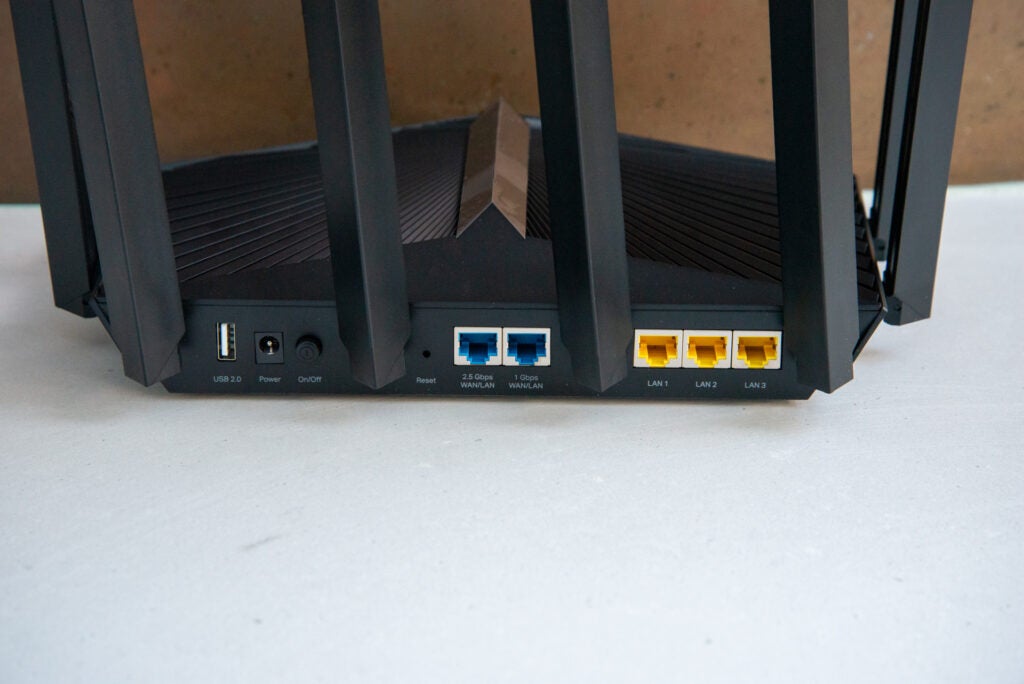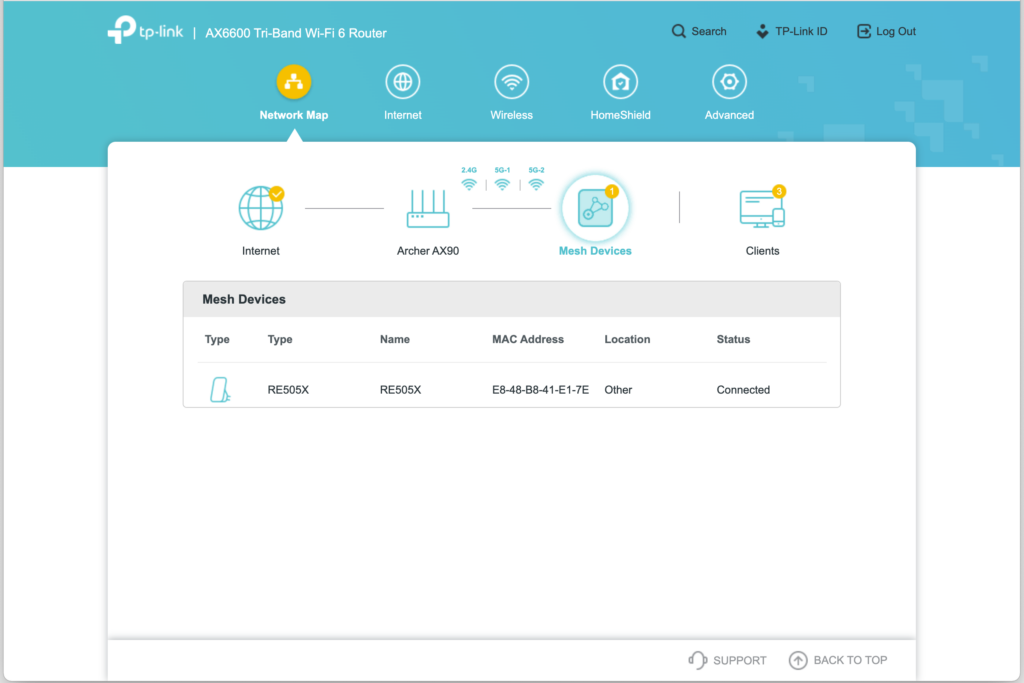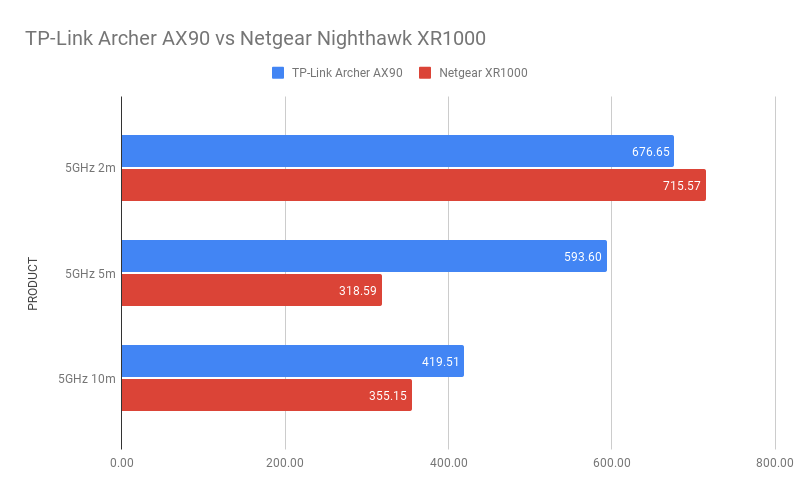TP-Link Archer AX90 Review
A tri-band wireless router with lots of features


Verdict
The TP-Link Archer AX90 is a decent tri-band router. Its bandwidth is a little lopsided, with the second 5GHz band delivering the highest performance, but there’s nothing to really complain about here. Thrown in the excellent parental controls and security features, even if some require a subscription, and this is a solid mid-range router at a great price.
Pros
- Good price
- Tri-band system
- Solid performance
Cons
- Some features need a subscription
- Most bandwidth is in one network
Availability
- UKRRP: £205
Key Features
- Wi-FiThis is a Wi-Fi 6 router, with two 5GHz networks and a single 2.4GHz network.
Introduction
Compared to the main competition, the TP-Link Archer AX90 Wi-Fi 6 router delivers a lot of high-end features, including tri-band networking, at a great price.
A decent range of ports, fast speeds and built-in security and user management make this a great mid-range router, even if some advanced features require a subscription and bandwidth is a little lopsided.
Design
- Lots of antennas
- Good selection of Ethernet ports
With its eight antennas sticking up around the case, the TP-Link Archer AX90 isn’t the nicest-looking bit of kit that you’ll find. You’ll also need a fair amount of surface space to stand it up.
Spin the router around and you can see the range of ports on the back. There are three standard Gigabit Ethernet ports for wired devices, and then two additional ports, which can be used as either a WAN for the internet connection or as a LAN port.

The difference between the two WAN/LAN ports is that one is a faster 2.5Gbps port, and the other is standard Gigabit Ethernet. Gigabit Ethernet should do for any UK internet connection, leaving the faster port for a device that supports it, such as a new PC. There’s also a USB port for file sharing.
At the front of the router are buttons to toggle Wi-Fi and the router’s lights, plus a WPS button for quickly joining supported devices to your home network.

Features
- Tether app used for setup and control
- Some features require a subscription
- Can add OneMesh devices
Configuration of the router is done through the TP-Link Tether app. This takes you through configuring your internet connection and setting up secure wireless networks. Here there are three networks to configure: two 5GHz and one 2.4GHz, with a total of eight streams available.

Bandwidth is a little lopsided, with the 2.4GHz network supporting a maximum speed of 574Mbps, and the first 5GHz network supporting speeds up to 1201Mbps. With the second 5GHz network, which runs on higher channels and offers 160Mhz channel width, you get much more bandwidth of 4804Mbps.
For higher performance devices, then, you want to connect to the second 5GHz network, and you can use the other bands for devices that don’t need to use as much bandwidth, such as smart products.
From the app, you can toggle the guest network and view which devices are connected to your router. There’s also HomeShield built-in. With the free version of this, you can create profiles for each family member and assign their devices to them. You can then set a single bedtime, choose a level of web filtering or pause the internet for that person. HomeShield also gets you basic network security and Quality of Service (QoS) settings.
Upgrade to HomeShield Pro (£5.99 a month or £53.99 a year) and you can set multiple Bedtimes, time limits for each person and you get more advanced security. The compares well to the basic service you get on products such as the Netgear Orbi RBK862, where you get basic filtering built-in but have to pay separately for security and more advanced parental controls.
Although this is a standalone router, it supports TP-Link’s OneMesh technology. With compatible range extenders, you can build a proper mesh network, which may be helpful if you find that the router doesn’t quite reach every area of your home.

More advanced settings, such as port forwarding, can’t be configured through the app but are managed through the router’s web management page.
Performance
- Good range
- Faster on the second 5GHz band
- 2.4GHz network is a little slow
I tested the router’s performance using the Tamosoft Throughput Test. Starting on the 5GHz band, I found that the second band was quite a bit faster; both because it has more bandwidth and secondly because the higher channels it uses are less common with less interference.
I measured the TP-Link Archer AX90 at 676.65Mbps from 2m away in the same room. That’s quick, but I’ve tested faster routers, such as the Netgear Nighthawk XR1000 gaming router. At range, the tri-band Archer AX90 showed its worth, with speeds of 593.60Mbps on the first floor (5m away) and 419.51Mbps on the second floor (10m away).

Given that I live in a house with a lot of network interference, the higher bands used here clearly help.
Testing on the 2.4GHz band wasn’t so successful. Thanks to a lot of neighbouring interference, I saw throughputs of 98.85Mbps at 2m, 40.64Mbps at 5m and just 21.29Mbps at 10m. I always try to avoid using 2.4GHz networking where possible for these reasons.
Latest deals
Should you buy it?
If you want a well-priced, feature-packed router that’s cable of delivering decent speeds, this is a great choice.
If you want the fastest performance, there are quicker routers. Those that live in a house where coverage is a problem may be better off with a mesh system.
Final Thoughts
Given the range of features and decent overall performance, the TP-Link Archer AX90 is a great buy. I recommend running devices that need the most speed on the second 5GHz channel. If you need more coverage, you can expand this router with mesh extenders, although you may be better off with a dedicated mesh system. Check out the guide to the best routers for more options.
How we test
Unlike other sites, we test every wireless router we review thoroughly over an extended period of time. We use industry standard tests to compare features properly. We’ll always tell you what we find. We never, ever, accept money to review a product.
Find out more about how we test in our ethics policy.
Used as our main wireless router for the review period
We throughput test all wireless devices using the same equipment in the same locations so that we have accurate comparisons
FAQs
This is a Wi-Fi 6 router.
This lets you build a mesh network using compatible range extenders.




